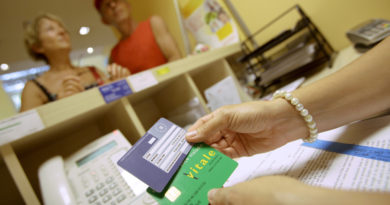Parcel delivery in EU about to get cheaper
Shopping online? The cost of international parcel delivery in Europe is about to come down. The European parliament will vote this week a regulation to reduce prices and give a boost to e-commerce in Europe.
A 2015 study revealed that the price for international deliveries within the European Union can be 471% higher than domestic ones. In addition, there can be significant differences between countries. For example, sending a parcel from the Netherlands to Spain would cost 13 euros, while sending it in the opposite direction would cost 32.74 euros.
According to the European Commission, consumers could save up to 11.7 billion euros a year if they could choose among service providers when shopping online. High prices of international deliveries are considered an obstacle to the growth of e-commerce within Europe.
In 2014, says the EU executive consumers scorecard, 44% of EU consumers reported buying online from their country and 15% from other EU countries. But a public consultation revealed that over two thirds of consumers had given up an online purchase because of the delivery costs.
At the same time, only 12% of businesses sell online to consumers in other EU countries, and 51% of companies that do (or tried to do so) said the delivery costs were too high.
This situation is partly due to the evolution of the market. Since the 1997 EU postal services directive, business-to-consumer (B2C) services provided via platforms such as Ebay and Amazon have surged, while letters have been largely replaced by emails. But while the delivery of letters has to comply with the principles of ‘universal service’ (which has to be provided at an affordable price to all users in the EU, regardless of the geographical location), parcels are exempt. Competitive prices, therefore, tend to be in business-to business services or in areas densely populated, where there are most deliveries.
Adding to this, different national legal frameworks make the comparison difficult and often leave national regulators without the necessary information to intervene.
To remedy, in 2016 the European Commission presented a legislative proposal to increase transparency and improve oversight by regulators. After months of discussion, the European parliament and the EU Council have agreed that there should be a dedicated website, where the Commission will publish public tariffs of cross-border delivery service providers, so that consumers and businesses can compare. Delivery operators (national posts, express couriers and similar service providers, except for small enterprises) should also communicate more data to national regulators, which will have greater powers to assess tariffs and intervene if necessary.
The European parliament is expected to give green light to such measures this week.
A 2015 International Post Corporation survey in 17 countries around the world, including 10 in the EU, showed that the main categories of goods bought online by cross-border shoppers were clothes, footwear and apparel (25%), consumer electronics (14%), books, music and media (11%). The majority (59%) of cross-border online purchases were worth between 10 and 100 euros.
According to a survey by ANEC (the European consumer voice in standardisation) in 22 EU countries, the main reasons for cross-border shopping are that the items are not available in the home country (66%) or are cheaper (58%).
Claudia Delpero all rights reserved.
Photo via Pixabay.




